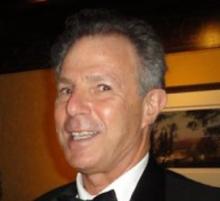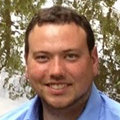Four alumni contribute to recent NASA advancements
From its first administrator (T. Keith Glennan, on leave from his role as president of Case Institute of Technology) to an astronaut who logged more than 1,040 hours in space (1977 alumnus Donald Alan Thomas), the National Aeronautics and Space Administration (NASA) has a history of connections with Case Western Reserve University.
Across NASA’s 65 years, numerous Case Western Reserve faculty, students and alumni have participated in NASA research or worked for the administration. In honor of National Space Day earlier this month, we’re highlighting four alumni who have played important roles in some of NASA’s recent advances.
James Marder (GRS ‘81, metallurgy and materials science)
When the James Webb Space Telescope launched into space in 2021, it carried an innovation nearly 40 years in the making.
James Marder was working for Brush Wellman (now Materion) in the early 1980s when he began developing the telescope’s mirror using the metallic element beryllium.
Durable and lightweight, the material is ideal for space structures in many ways, but it was too porous for mirrors, not to mention costly. Fortunately, Marder was able to convince Brush Wellman to continue investing in the project and to purchase the multimillion-dollar hot isostatic press needed to process the material.
The advancements made by Marder and his team were critical to the construction of the Webb Telescope, which is used to study galaxies more than 13 billion light years away.
Other innovations of Marder’s have made it into space over the years, including a cryogenic heat exchanger that flew with John Glenn on Space Shuttle Mission STS-95 in 1998, and a circuit board cooling mechanism on the 2020 Mars rover, Perseverance—some of the technology for which was developed by another CWRU alum.
“To develop anything new, any new knowledge, takes a lot of people,” said Marder. “I’m glad to have been one of them.”
Adele Luta (GRS ’04, physics)
Adele Luta leads one of the Oceaneering teams responsible for designing the next generation of spacesuits, which NASA hopes to use on the International Space Station (ISS) by 2026.
New prototypes aim to provide better visibility and mobility, and weigh significantly less. Beyond working outside the ISS and exploring the lunar surface, the team is also developing new technology with the possibility of human missions to Mars in mind.
“It’s important to remember that we are building on decades of technology and discovery that brought us to this point,” said the former Presidential Innovation Fellow. “We’re standing on the shoulders of giants.”
Luta previously worked with NASA as an astronaut trainer in her 20s—a job she was uniquely qualified for due to her scuba diving experience. Today, she uses her diving skills for coral restoration. She just returned from visiting biomedical engineering researcher Joe Dituri during his record-breaking 100-day stay in an underwater habitat to study the effects of prolonged compression on the body and raise awareness of marine conservation.
As a student at CWRU, Luta could not have imagined where her career would take her, but credits her faculty mentors with encouraging her to explore her interests and take risks. She offers the same advice to fellow alumni embarking on new journeys: “If it excites you, try it—you never know where it will lead.”
Joe Dickman (CWR ‘10; GRS ‘10, mechanical engineering)
In 2022, NASA’s Planetary Defense Coordination Office launched a spacecraft destined for destruction with only one instrument on board: a telescope used for observation and navigation into an asteroid.
Joe Dickman led the mechanical design of the telescope as a member of the Johns Hopkins University Applied Physics Laboratory team that carried out NASA’s Double Asteroid Redirection Test (DART). While this particular asteroid did not pose any threat to Earth, the mission was historic, marking “humanity’s first time purposely changing the motion of a celestial object”, and successfully demonstrated our ability to deflect an asteroid.
Today, Dickman lives near Washington, D.C., with his wife Roshni Rao (CWR ‘10), and two children, Rian and Isha, and works for the quantum computing company IonQ. Though his technology won’t be sent into space again anytime soon, he likens the exploratory nature of the job to his work with NASA. Both require a love of discovery, which Dickman said was nurtured in his time at CWRU.
“I loved my time at Case Western Reserve,” said Dickman, who first interacted with NASA as a student through university-facilitated internships. “It’s important to dive in and get involved as much as you can while you’re a student. Take advantage of every opportunity.”
Rocco Viggiano III (GRS ’16, macromolecular science)
The demand for clean energy continues to rise as the effects of climate change become more apparent, but scientists have struggled to find suitable alternatives to fossil fuels. So when NASA put out a call for high-risk, high-reward research proposals, Rocco Viggiano knew what he wanted to study.
Viggiano is the principal investigator on NASA’s SABERS (solid-state architecture batteries for enhanced rechargeability and safety) project, leading a team of approximately 35 scientists across three NASA centers. The goal is to develop an alternative to lithium-ion batteries for aviation.
Lithium-ion batteries are used in electric vehicles, but they lack the power and efficiency necessary for electric flight, not to mention being heavy and flammable. Enter: graphene.
The strong nanomaterial is highly conductive, especially in the mesh form developed by Viggiano’s team. Combined with sulfur—an abundant byproduct of processing natural gas—it produces a high-power, extremely lightweight, non-flammable battery. The project shows immense promise, with many potential applications beyond electric flight.
Viggiano credits CWRU with providing a wide range of research opportunities, but he credits one person in particular for connecting him to NASA: his faculty advisor, David A. Schiraldi, professor emeritus of macromolecular science and engineering.
“I wanted to be thorough and looked at a lot of graduate schools before deciding,” said Viggiano, “but I kept coming back to Case Western Reserve, and I’m so glad I did.”
Have you contributed to any NASA projects in your career? We want to hear about it! Email alumnirelations@case.edu.





